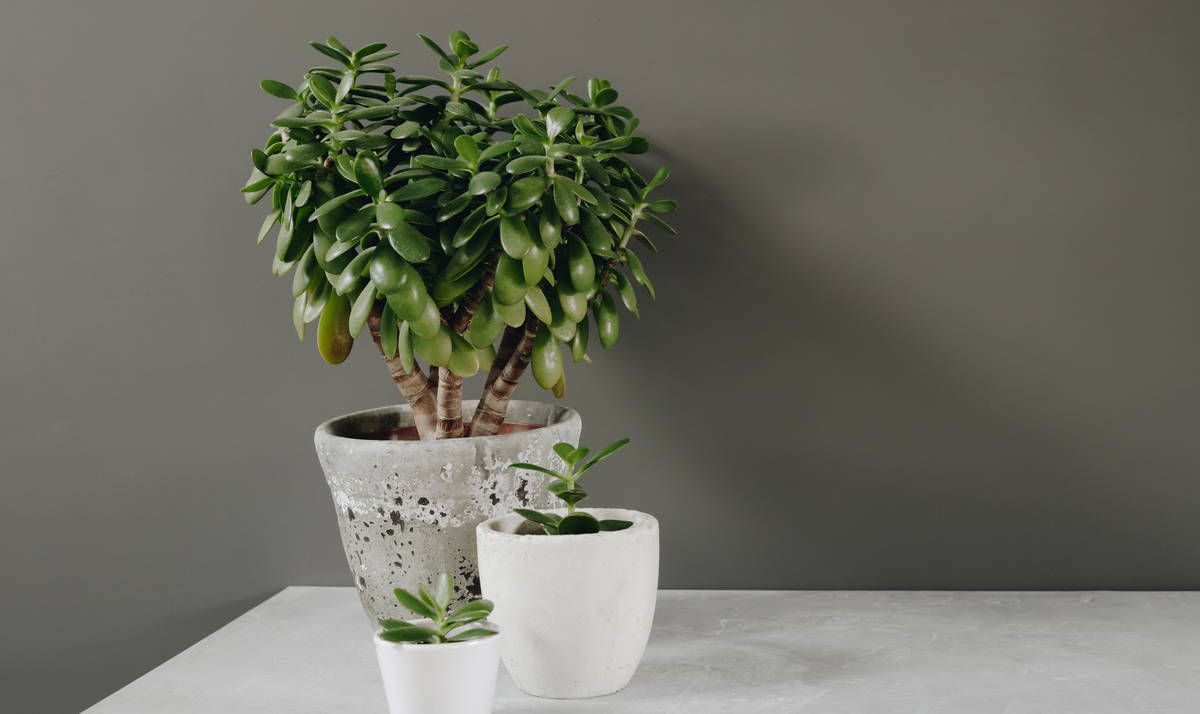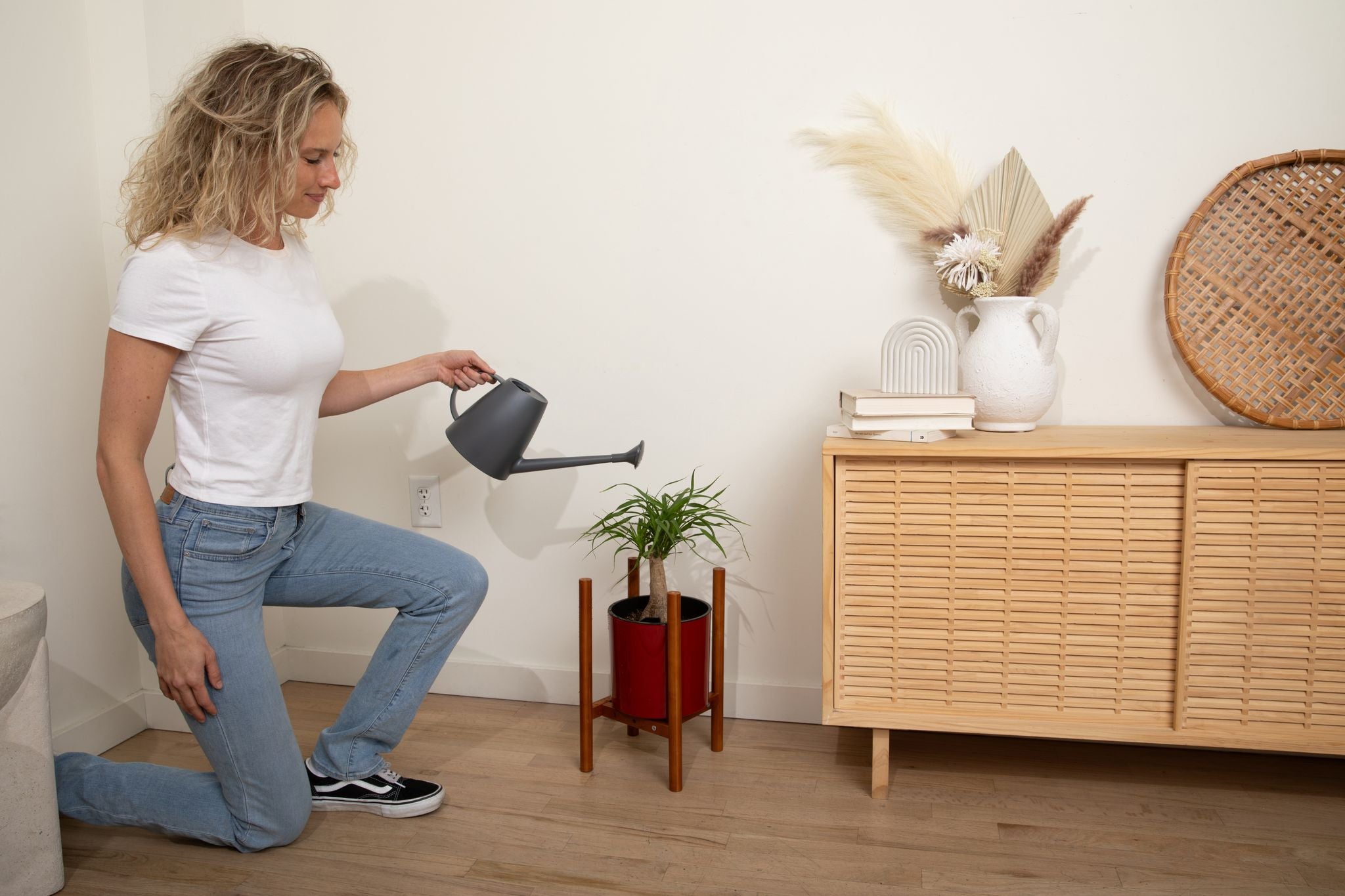How to Care for your Jade Plants in 5 Easy Steps

Jade plant
The jade plant (Crassula Ovata) is otherwise known as the “lucky plant” or “money plant.” It is native to South Africa and Mozambique. With thick, woody stems and full, oval-shaped, deep green leaves, jade plants are very tree-like, sprouting pink or white flowers in the summer and growing to heights of 3 feet or more (even when grown indoors)! These easy-to-care for succulents are a crowd favorite and bring a lively and unique energy to any space.
Caring for Your Jade Plant
Jade plants belong to the succulent family, which are typically drought resistant plants, but are slightly less drought resistant than their succulent sisters. If the climate air is too dry, their leaves will shrivel and drop. If the climate is too humid, water will linger on its leaves, which is a recipe for root rot. In an otherwise properly-adapted environment, their characteristically fleshy leaves store water (along with their stems and roots), giving these charmers their unique, fully-hydrated look. Jade plants are generally easy to nurture, so long as you have the right mixture of water, sunlight, temperature, soil, and fertilizer for optimal succulent care.
1. Pick Your Pot
When choosing a pot for your jade plant, you’ll want to choose a wide, sturdy pot to accommodate the top heaviness of these succulents as they grow. Clay pots work, but will require watering more often and aren’t as heavy and sturdy to support your plant’s growth. We recommend a ceramic pot or a plastic pot as the safest bet to allow for proper drainage and minimize instances of “wet feet” (water that accumulates at the bottom of the pot, which leads to root rot). With gorgeous craftsmanship, reliable sturdiness, and maybe just a pop of color, you can accessorize your jade plant with some serious head-turning style with one of our ceramic or plastic succulent pots!
2. Use Well-Draining Soil
Using the right type of soil for your jade plant is absolutely imperative. Because these plants belong to the succulent family, they retain water in their leaves and stems for longer than non-succulent plants, which means they are prone to overwatering. You will want to choose a soil that drains thoroughly and is able to dry out properly between waterings.
If all you have handy is all-purpose plant soil, that will work fine, as long as you add in a bit of perlite (2:1 ratio all purpose plant soil to perlite) to improve the damage and protect your jade plant against root rot. We recommend you opt for a cactus and succulent soil to ensure your jade plant gets all the nutrients it needs to thrive, as well as to drain properly. We even have a mix made specifically for Jade Plants, featuring a blend of coir, perlite (small sponge rock), hydroton, and fine vermiculite.
Once potting your jade plant, avoid watering it immediately. Allow a few days, up to a week, for the roots to recover from any damage incurred from repotting.
3. No Helicopter Plant Parenting!
As with most plants, you don’t want to under or over water these beauties. Jade plants are susceptible to root rot, which is caused by overwatering. Soggy soil that can’t dry quickly enough between waterings creates an environment conducive to mold growth, from which your jade plant will be unrevivable. You don’t want to let your jade plant dry out, either.
With jade plants, it’s all about meeting them where they are: in the spring and summer. When they grow, they will need more watering. When they go dormant, they need less watering. In the spring and summer, water your jade plant thoroughly and then wait for the soil to mostly dry out (when the top inch of soil is dry to the touch) before watering again. For fall and winter, you won’t need to water your jade plant as thoroughly and can go much longer in between waterings.
4. Sunlight Needs
Jade plants need lots of direct sunlight and a warm, dry environment (65-75 degrees Fahrenheit is preferred), making them perfect for your home or office. For well-established jade plants, six or more hours of direct, bright light is ideal, though for younger plants, bright and indirect sunlight is more conducive for growth. Place your jade plant on a south or west-facing kitchen or office window sill, and watch these babies grow! If you find you need supplemental lighting, we have grow lights that will do the trick.
5. Feeding Your Jade Plant
Jade plants aren’t high maintenance when it comes to fertilization. Because they don’t require a high level of various nutrients to thrive, fertilize sparingly using our meticulously formulated cactus and succulent food.

